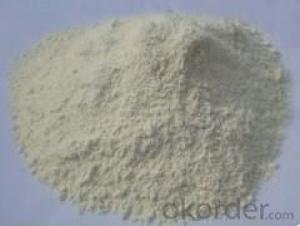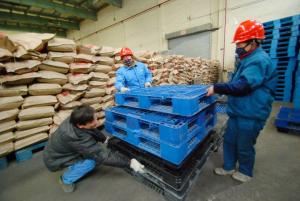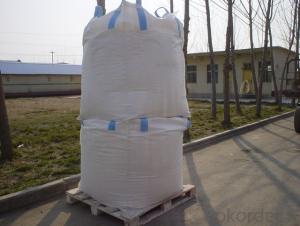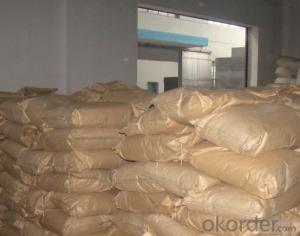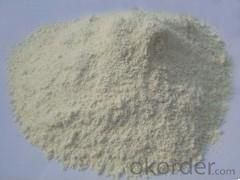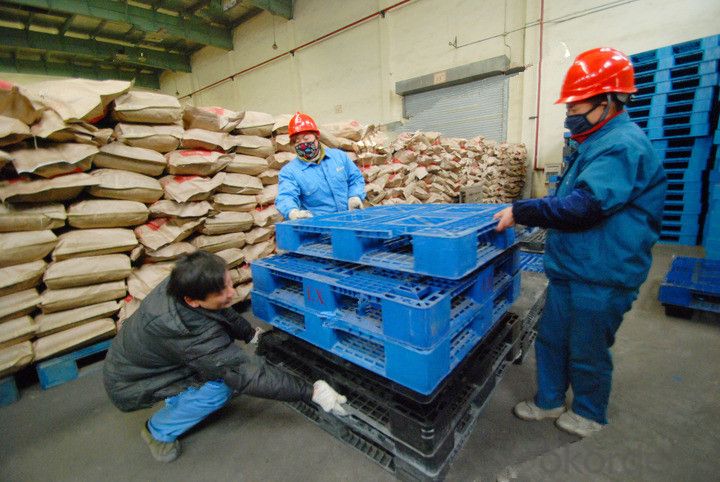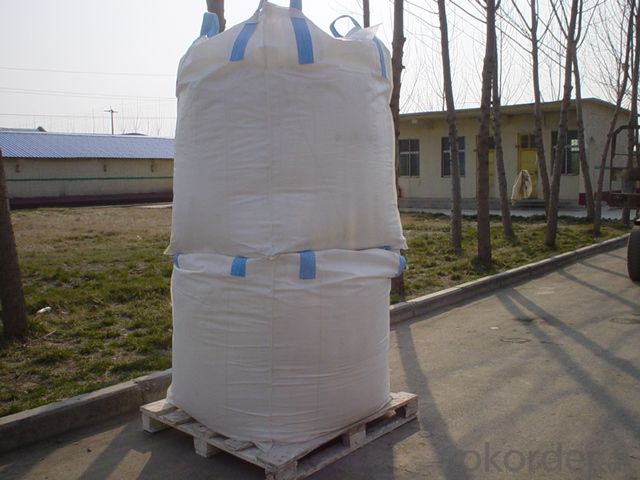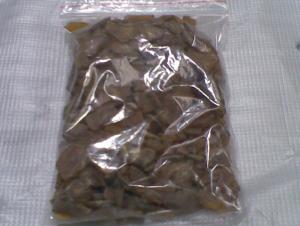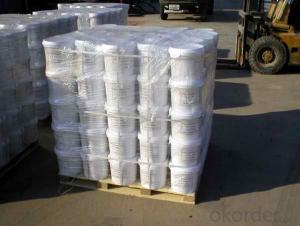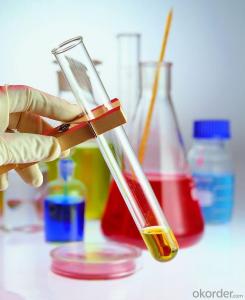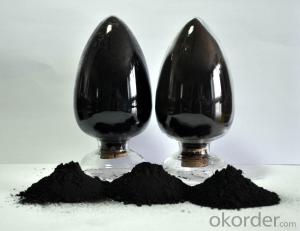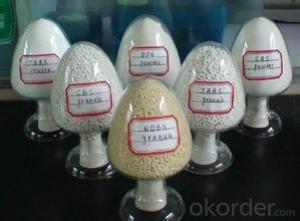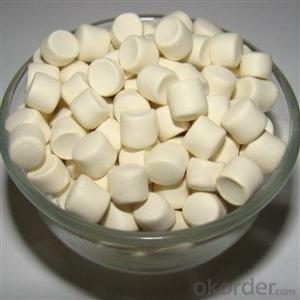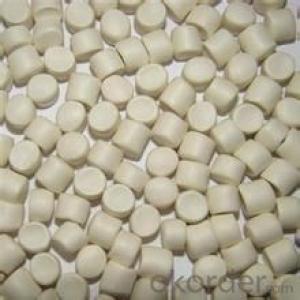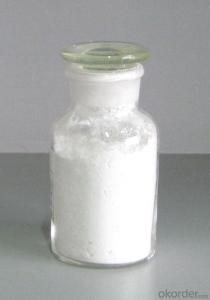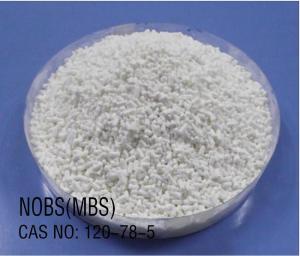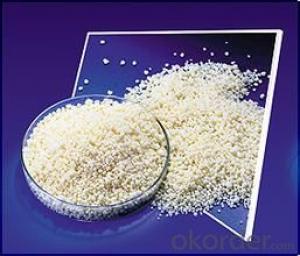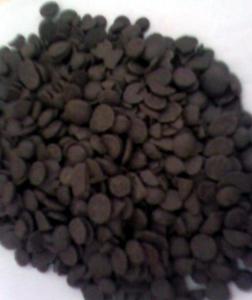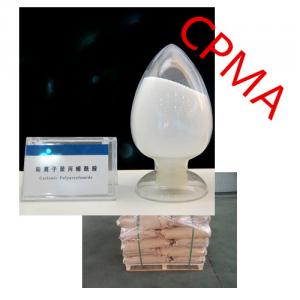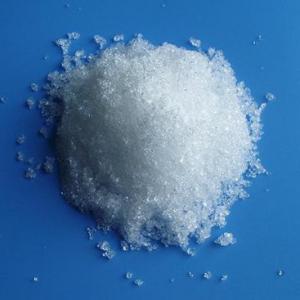RUBBER VULCANIZING ACCELERATOR NS Rubber Chemicals
- Loading Port:
- Tianjin
- Payment Terms:
- TT OR LC
- Min Order Qty:
- 25 m.t.
- Supply Capability:
- 12000 m.t./month
OKorder Service Pledge
OKorder Financial Service
You Might Also Like
RUBBER VULCANIZING ACCELERATOR TBBS(NS)
Chemical Name: N-Tertiarybutyl-2-benzothiazole sulfennamide
Molecular Formula:C11H14N2S2
Molecular Weight:238.37
CAS NO. : 95-31-8
Executive standard:GB/T21840-2008
Specification:
Item | Index |
Appearance | White or light yellow powder, granular |
Initial M.P,oC ≥ | 104.0 |
Loss on drying, % ≤ | 0.40 |
Ash, % ≤ | 0.30 |
Residues on 150μm sieve, % ≤ | 0.10 |
Insoluble in Methanol,% ≤ | 1.00 |
Free amine,% ≤ | 0.5 |
Properties: White or light yellow powder, granular. The density is 1.26-1.32. Soluble in benzene, methylene chloride, carbon tetrachloride, ethyl acetate, acetone, ethanol, dissolved gasoline, do not dissolve in water, acid, dilute alkali solution.
Application: Provides fast cure rate and high modulus development in NR, SBR, BR and blends. Normally used alone or with small quantities of ultra accelerators in tire compounds or industrial rubber products low poison and high efficiency. It is good back up for NOBS. Be regarded as standard accelerator.
Packaging: 25kg plastic woven bag, paper with plastic film bag, Kraft paper bag or jumbo bag
Storage: The product should be stored in the dry and cooling place with good ventilation, avoiding exposure of the packaged product to direct sunlight. The validity is 1 year
Note: The product could be ultra fine powder based on customer accurate requirement.
- Q: What is the similarity between enzymes and general chemical catalysts?
- (1) The enzyme is the same in many respects as a biocatalyst and a general catalyst, such as a small amount and a high catalytic efficiency. As with the general catalyst, the enzyme can only change the rate of chemical reaction and does not change the equilibrium of the chemical reaction It is possible to catalyze the activation of a large number of substrates in a short time and to reflect the high efficiency of enzyme catalysis.The enzyme can reduce the activation energy of the reaction (activation) (△ G) during the reaction, but the reaction rate is accelerated and the reaction time is reduced, but the equilibrium constant is not changed. (2) However, the enzyme is a biological macromolecule (1) Enzyme-catalyzed high efficiency: The catalytic effect of the catalyst can increase the reaction rate by 10 ^ 6 ~ 10 ^ 12 times, which is at least several times higher than that of the conventional catalyst. (2) The enzyme catalyst Highly specificity: including specificity of response, substrate specificity, chirality specificity, geometric specificity, etc., that an enzyme can only act on a certain class or a specific substance. Bond, ester bond, peptide bond and so on can be catalyzed by acid-base hydrolysis, but the hydrolysis of these chemical bonds are different, respectively, the corresponding glycosidase, esterase and peptidase, that is, they were specific (3) enzymatic reaction conditions are mild: enzymatic reaction is generally carried out in aqueous solution of pH = 5 ~ 8, the reaction temperature range is 20 ~ 40 ℃
- Q: Chemistry why the catalyst can be equal to speed up the positive reaction rate
- Since the catalyst only changes the activation energy and the amount of reactivity can be reduced, the amount of reaction energy is also reduced. Therefore, a positive catalyst is also a good catalyst for its reaction. Speed up the same multiple.
- Q: Will the chemical catalyst not reduce that?
- Why is it done? Although the catalyst does not react chemically, the catalyst itself is deteriorated and is not always used
- Q: Why the catalyst is required to have a large surface area and a rich pore structure
- Chemical reactions are generally contact reaction, of course, the more contact with the faster response, pore structure is to increase the contact area
- Q: The last question asked no one answered this question.
- This problem is difficult to answer comprehensively because the study of the different directions of the catalyst is different.
- Q: Effect of Catalyst on Chemical Reaction Rate
- The catalyst can only change the rate of chemical change (faster or slower), does not change its own quality and chemical properties, nor does it change the amount of reaction product.
- Q: A substance involved in chemical reflection, but reflects the quality of the material before and after the change, you say it is a catalyst?
- The role of the catalyst is to change the reaction rate of the chemical reaction, which itself does not participate in the reaction! The
- Q: Why extract the genome, the digestion is always not cut
- Enzymes are proteins that are highly specific and catalyzed in living cells, also known as biocatalysts, which are produced by the organism itself. In the metabolic process, almost all chemical reactions are in the enzyme Catalyzed, and the conditions are mild, the reaction efficiency is extremely high, so that the various substances in the body in constant metabolism, in this sense, there is no enzyme without life. Intracellular synthesis of enzymes mainly in the cell from the catalytic The role of some enzymes after the release into the blood or digestive tract, and where to play its catalytic role, artificial extraction of enzymes in the appropriate conditions can also be in the test tube of its special substrate catalytic role.
- Q: Chemical reactions in the presence of impurities will cause catalyst poisoning, how to understand this sentence
- Catalyst in use will be due to various factors and loss of activity, one of the important factors is poisoning. There are several possible reasons for the poisoning of the catalyst. The small amount of impurities contained in the original branch, or the strong adsorption (mostly chemical adsorption), or the chemical center of the active center, So that active center poisoning. In addition, there may be such poisons in the reaction product; in the preparation of the catalyst, the impurities contained in the carrier interact with the active component and may also poison the active center.
- Q: What chemical reactions can water do the catalyst?
- So far heard, but can and Na and other metal reaction
Send your message to us
RUBBER VULCANIZING ACCELERATOR NS Rubber Chemicals
- Loading Port:
- Tianjin
- Payment Terms:
- TT OR LC
- Min Order Qty:
- 25 m.t.
- Supply Capability:
- 12000 m.t./month
OKorder Service Pledge
OKorder Financial Service
Similar products
Hot products
Hot Searches
Related keywords
